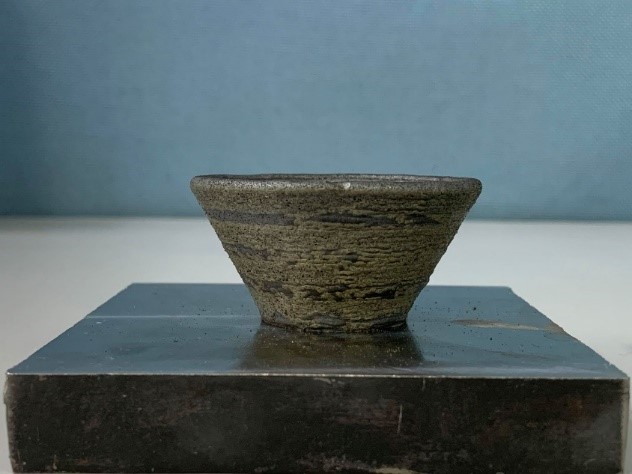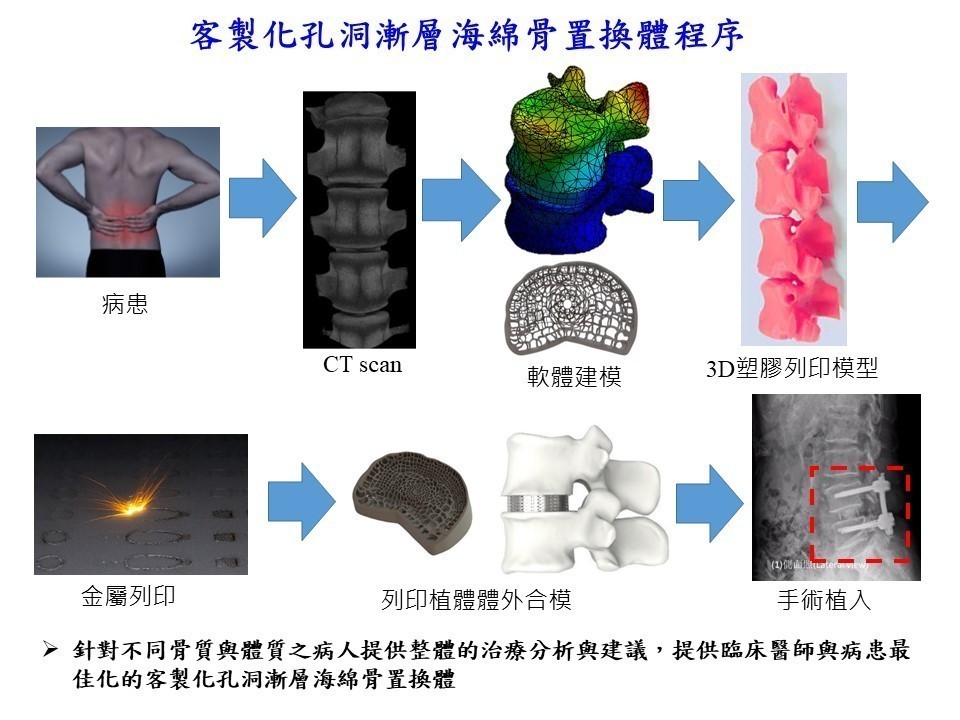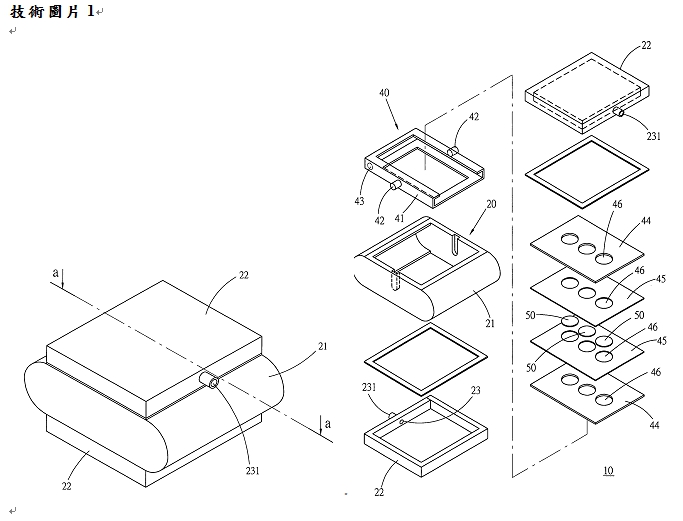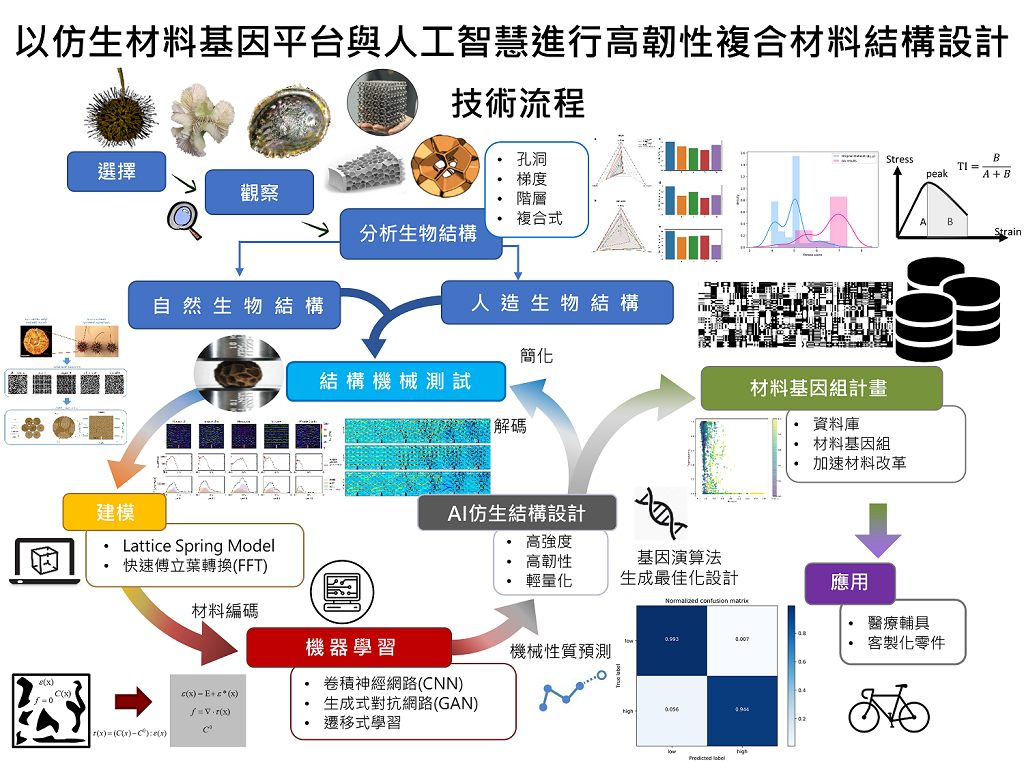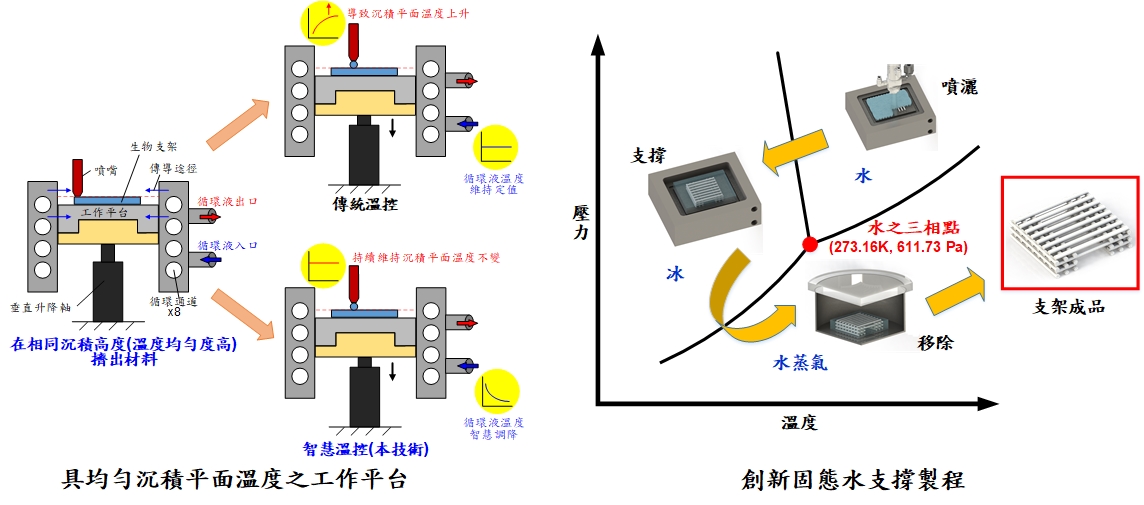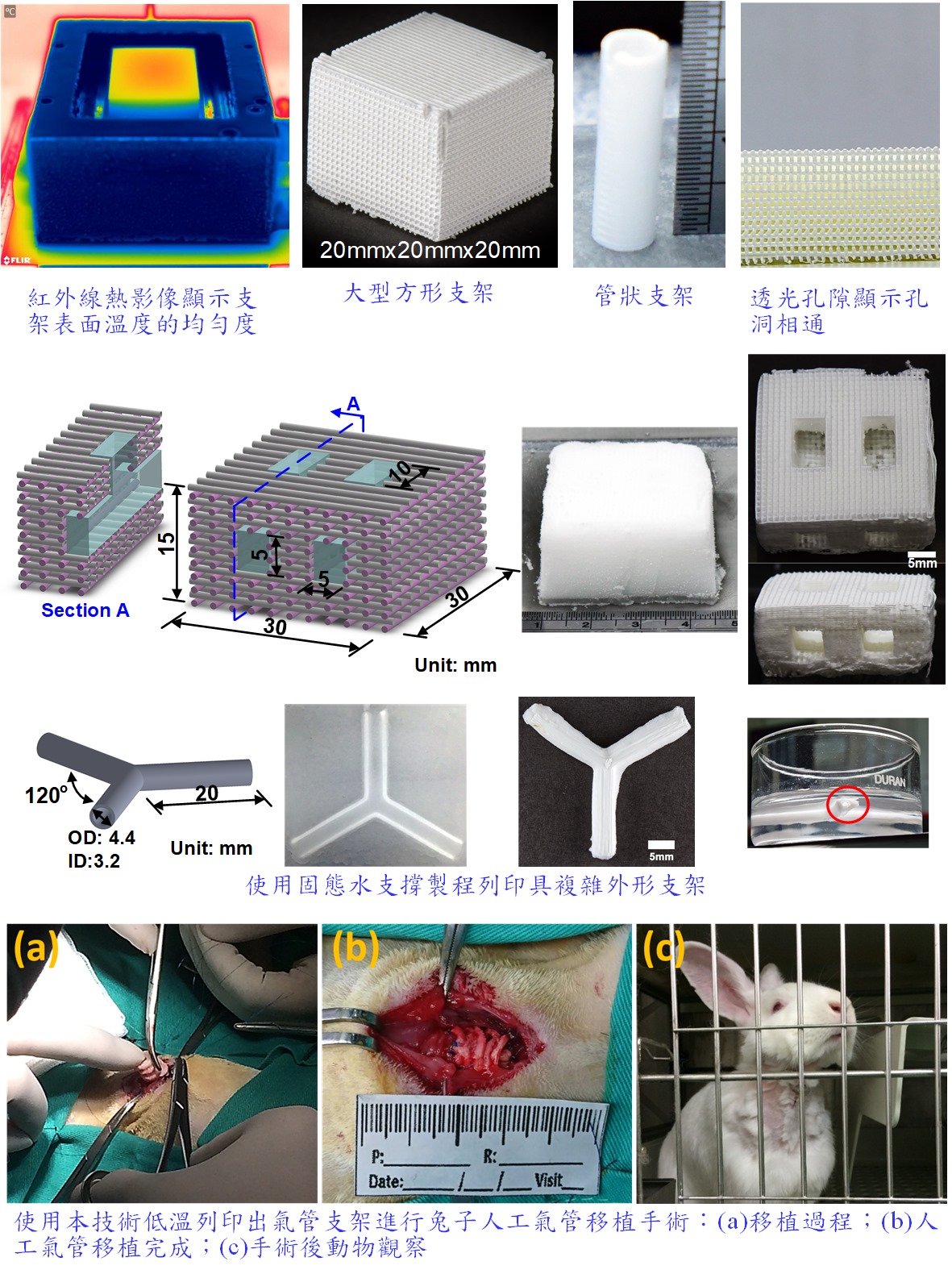| Technical Name | Intelligent Three-dimensional Bioprinting System for Tissue Engineering Applications | ||
|---|---|---|---|
| Project Operator | National Central University | ||
| Project Host | 廖昭仰 | ||
| Summary | This technology has two main innovations. First is an intelligent temperature control platform, making 60 mm x 40 mm x 10 mm scaffolds, with a vertical temperature difference of only 3 °C. The platform moves along the Z-axis and transfers the thermal energy from the circulating block to the platform to construct a semi-closed environment. The nozzle always extrudes bio-ink at the same deposition level, so the horizontal deposition temperature distribution has a uniformity. As the platform gradually goes down, the circulating fluid temperature increases/decreases through an adaptive temperature control algorithm to maintain the vertical deposition temperature unchanged. The second innovation is the “Water/Ice” sacrificial process for printing at low temperatures. It uses the three states of water, sprays between the gaps of the scaffold in a liquid state, solidifies into a rigid support structure at a low temperature, and finally disappears entirely by ice sublimation. |
||
| Scientific Breakthrough | This technology develops a three-dimensional bioprinting system with a stable temperature environment. The actual test: when the platform sets at -30°C, and the scaffold with a height of less than 10mm, the horizontal and vertical deposition temperature differences are only 1°C and 3°C, respectively. The "Water/Ice" sacrificial process can print high-porosity scaffolds with complex shapes at low temperatures. We also successfully printed tracheal scaffolds and performed rabbit tracheal transplantation surgery. The rabbit survived for more than four weeks without any symptoms of dyspnea. |
||
| Industrial Applicability | The intelligent three-dimensional bioprinting system can first focus on organoid production or pet medical treatment. With research organizations, pharmaceutical factories, cosmetics companies or pet owners as the core market, we provide organoids for drug screening or product development testing, as well as allows owners to choose customized medical methods for their pets. In the future, with the permissions of medical regulations, we can move to human organ repair and even more advanced organ transplantation services. |
||
| Keyword | 3D Bioprinting Bioprinter Low-temperature Printing Tissue Engineering Additive Manufacturing Organ Repair Organ Regeneration Temperature-controlled Platform Uniform Temperature Environment Temperature Regulation Control | ||
- cyliao@ncu.edu.tw
other people also saw

